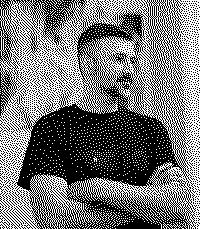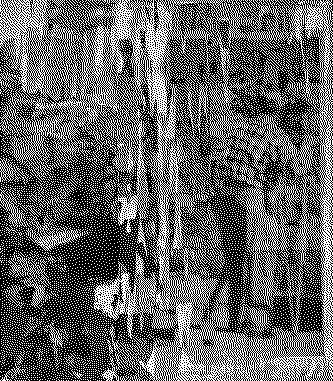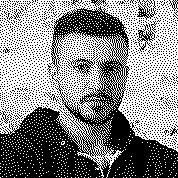Artists/Adrian Ghenie
Fast Facts
Combination of Figurative and Abstract
Ghenie's paintings typically combine figurative and abstract elements. His work is known for its textured, layered surfaces and its blending of historical and contemporary imagery.
Themes of History and Memory
Many of Ghenie's paintings explore themes related to history, memory, and the human condition, often referencing dark periods in European history, such as the Holocaust and life under totalitarian regimes.
Influenced by Historical Events
His work is deeply influenced by 20th-century European history, including the rise and fall of totalitarian regimes. He often incorporates imagery associated with this history into his paintings.
Part of the "Cluj School"
He is associated with the "Cluj School" of painting, a group of artists from the Cluj-Napoca region of Romania known for their figurative, often haunting style of painting.
Biography



Adrian Ghenie, born on August 13, 1977, in Baia Mare, Romania, is a contemporary Romanian painter renowned for his intricate and thought-provoking works that blend figurative and abstract elements.
Ghenie's early life was shaped by his upbringing as the son of a dentist, and he pursued his passion for art through formal education, studying fine arts at the Arts and Crafts School in Baia Mare between 1991 and 1994, and later graduating from the Art and Design University of Cluj-Napoca in 2001 (Wikipedia).
Choosing to live and work between Cluj, Berlin, and London, Ghenie has become a prominent figure in the international art scene. In 2005, he co-founded Galeria Plan B in Cluj with Mihai Pop, establishing a space dedicated to contemporary art production and exhibition. This initiative expanded in 2008 with the opening of a permanent space in Berlin, further cementing his influence and presence in the art world (Wikipedia).
Ghenie's career has been marked by significant achievements and recognitions. His works, which often focus on historic subjects and figures associated with both great suffering and groundbreaking achievements—ranging from dictators like Hitler and Ceausescu to innovators like Charles Darwin and artists Vincent van Gogh and Marcel Duchamp—have captured the attention of both institutions and collectors worldwide. Ghenie's paintings have seen a dramatic increase in value, with notable sales such as "Nickelodeon" (2008) which was sold for £7.1 million at Christie's after being acquired by François Pinault in 2009 for approximately €60,000 (Ocula Art).
Adrian Ghenie has been featured in numerous solo and group exhibitions across Europe and America, and his work has been included in international biennials, such as the 56th Venice Biennale in 2015 where he represented Romania. His exhibitions cover a broad spectrum of themes and periods, from "The Hooligans" at Pace Gallery, New York (2020), to his participation in group exhibitions like "La Brique, the Brick, Cărămida" at La Kunsthalle Mulhouse, France (2019). Ghenie's contributions to the art world extend beyond his paintings, influencing contemporary art discourse and inspiring new generations of artists and collectors (Ocula Art).
Through his innovative use of palette knives and stencils instead of traditional brushes, Ghenie has developed a distinctive style that allows him to explore the depths of human suffering, history, and emotion with a visceral intensity. His works are represented in numerous prestigious museum collections worldwide, including the Centre Georges Pompidou, the Hammer Museum in Los Angeles, and the San Francisco Museum of Modern Art (Wikipedia). Adrian Ghenie continues to challenge and captivate audiences with his profound insights into the human condition and history, securing his place as a leading figure in contemporary art.
Importance
Adrian Ghenie's significance in the contemporary art world is multifaceted, reflecting his innovative exploration of historical and personal narratives, his pivotal role in the Romanian and Eastern European art scene, and his unique blending of figuration and abstraction:
Pioneering Figurative Abstraction with Historical Depth
Ghenie combines figurative painting with gestural abstraction, exploring themes of monstrosity, dysmorphia, and the grotesque through historical and pop-cultural references. His work delves into the darker aspects of human history and psyche, often portraying figures associated with 20th-century atrocities alongside cultural icons, thus creating a complex dialogue between past and present (Artefields) (Ocula Art).
Revitalization of Eastern European Art
Emerging from post-Soviet Romania, Ghenie played a crucial role in the global recognition of Eastern European art. His early experiences, including the cultural isolation of Ceausescu's Romania and his education that surprisingly embraced abstraction over socialist realism, informed his unique artistic vision. Ghenie's move from a potentially stifling environment in Romania to becoming a central figure in the Cluj art scene and eventually gaining international acclaim showcases his ability to navigate and transcend geographical and cultural boundaries (Artefields) (Artnet News).
Co-founder of Galeria Plan B
Ghenie's entrepreneurial spirit is evidenced by his co-founding of Galeria Plan B in Cluj, which became a significant platform for contemporary art in Romania and beyond. This initiative not only provided a venue for emerging artists but also marked the beginning of what would be known as the "Cluj School," bringing international attention to the region's art (Artnet News).
Engagement with Personal and Collective Memory
His work is deeply rooted in personal and collective memory, exploring the impact of historical events on individual identities and societal structures. Ghenie's paintings are as much investigations into the nature of memory and representation as they are about the specific subjects they depict, merging personal experiences with broader historical narratives (Gnyp Art Advisory).
Influence and Market Success
Since his debut on the international art scene, Ghenie's works have rapidly appreciated in value, reflecting his significant impact on contemporary painting. His pieces, particularly those exploring themes related to Vincent van Gogh and historical events, are highly sought after by collectors and institutions alike, underscoring his importance in the market and his influence on the narrative of contemporary art (Artnet News).
Innovative Technique and Style
Ghenie's innovative use of texture and color, combined with his unique approach to blending figuration and abstraction, positions him as a critical figure in contemporary painting. His technique, which involves a combination of palette knife work and stenciling, allows for a dynamic interplay of form and content, challenging traditional perceptions of painting and representation (Wikipedia).
Technique
Adrian Ghenie's approach to painting showcases a sophisticated blend of traditional and innovative techniques, marking him as a significant figure in contemporary art:
Non-traditional Tools
Unlike many of his contemporaries, Ghenie avoids using traditional painting brushes. Instead, he opts for a palette knife and stencils to apply and shape the paint on his canvases. This method allows for a unique texture and depth, contributing to the intense and often distorted figures that characterize his work (Wikipedia).
Evolution of Technique
Over time, Ghenie has expanded his repertoire of techniques. While he initially gained recognition for his thick, impasto layers created with a palette knife, his more recent works show a notable shift. He has begun incorporating charcoal into his process, using it similarly to chalk on a blackboard. This development enables him to build and erase elements of his compositions dynamically, translating these images into oil on separate canvases. This methodological evolution has allowed Ghenie to maintain the appearance of texture and layering in his paintings while embracing a physically flatter construction, mirroring the digital age's influence on art and perception (Studio Intl.).
Integration of Historical and Contemporary Elements
Ghenie's work is deeply rooted in the exploration of historical themes, often merging them with contemporary issues. This is evident in his selection of subjects, where the traumas of the past intertwine with present-day concerns, creating layered narratives that challenge and engage viewers. His recent series, for instance, tackles the contemporary obsession with digital devices, portraying figures entangled with their screens in a dystopian reflection of today's society (Studio Intl.).
Critique Through Art
Despite the commercial success and high demand for his work in the art market, Ghenie remains committed to exploring complex and often uncomfortable subjects. His paintings serve as a platform for critiquing authoritarian figures and societal issues, making bold statements that resonate with a broad audience. Through his unique visual language, Ghenie articulates a critique of both historical atrocities and current societal trends, making his work relevant and thought-provoking (Studio Intl.).




